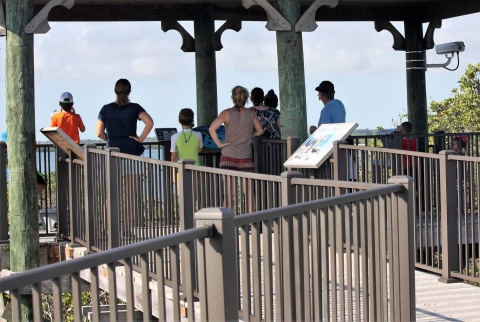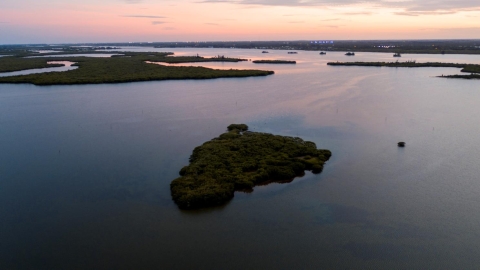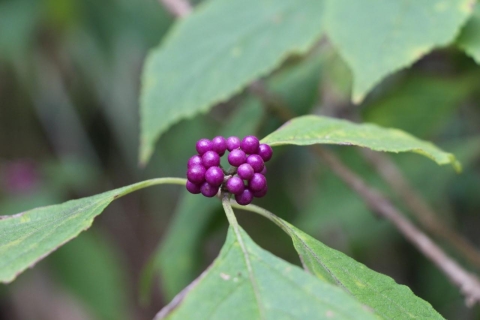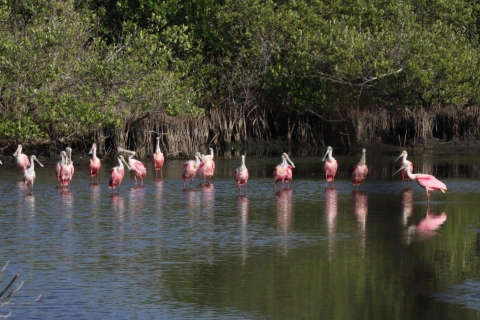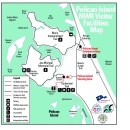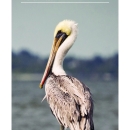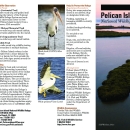Visit Us
The Nation’s most historic refuge offers an array of recreation opportunities for birders, nature photographers and other outdoors enthusiasts. Two 3-mile loop trails around managed salt marsh salt marsh
Salt marshes are found in tidal areas near the coast, where freshwater mixes with saltwater.
Learn more about salt marsh and mangrove habitats as well as our newest Wildlife Trail give a taste of the refuge’s habitats and wildlife. The easy ¾-mile Centennial walking trail offers views of Centennial Pond and culminates in a 500-foot Americans with Disabilities Act accessible observation tower and boardwalk with a view of Pelican Island proper, located in the middle of the Indian River Lagoon.
Fall through spring are considered the best time of year to see the famous residents of Pelican Island, including the migratory white pelicans as well as nesting brown pelicans. For history buffs, there are informational signs along the trails, detailing the story of the Nation’s First Wildlife Refuge, and the people who started it all. Kayaking, boating, and swimming opportunities abound in the Lagoon waters surrounding Pelican Island proper and the many spoil and mangrove islands that fall within the Refuge boundaries.
Location and Contact Information
About Us
Pelican Island, the nation’s most historic refuge, and the surrounding area was first inhabited by the Ais people between 2000 BCE and the mid-1600. Then, in 1903, President Theodore Roosevelt’s executive order designated the island as the nation’s first national wildlife refuge for the protection of nesting birds. Pelican Island was established as wilderness by Congress in 1970.
What We Do
Pelican Island National Wildlife Refuge has a fire management plan in place that allows the National Wildlife Refuge System to fulfill its mission to conserve and restore fish, wildlife and plant resources for the benefit of present and future generations. As part of the comprehensive conservation plans and environmental assessments for the refuge, a program is in place to manage any wildland fires and to conduct prescribed fires that help mitigate wildfire damage, encourage new growth of native vegetation, and maintain those habitats for the benefit of plant and animal species that depend on periodic fire. The refuge also conducts habitat restoration projects, wildlife surveys, invasive species invasive species
An invasive species is any plant or animal that has spread or been introduced into a new area where they are, or could, cause harm to the environment, economy, or human, animal, or plant health. Their unwelcome presence can destroy ecosystems and cost millions of dollars.
Learn more about invasive species removal, and mosquito control measures in partnership with the Indian River Mosquito Control District.
Our Species
The refuge was created in 1903 to safeguard the last remaining nesting habitat for brown pelicans and other wading birds on America’s East Coast. It also serves to protect endangered and threatened species, and to provide feeding, nesting, and roosting areas for over 130 species of birds.
Our Library
Visit our digital library to find refuge documents, brochures, and fact sheets.
